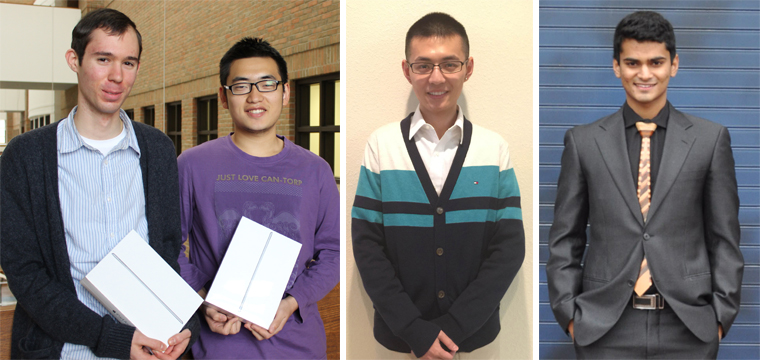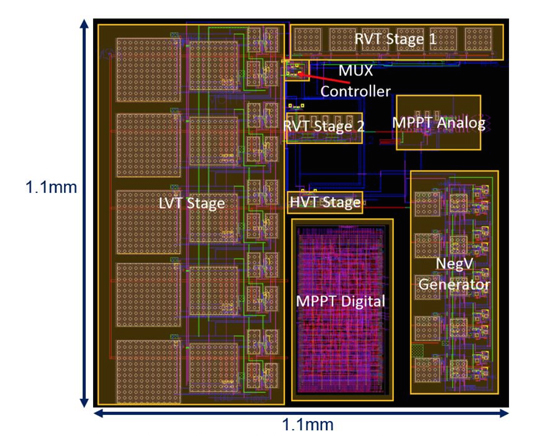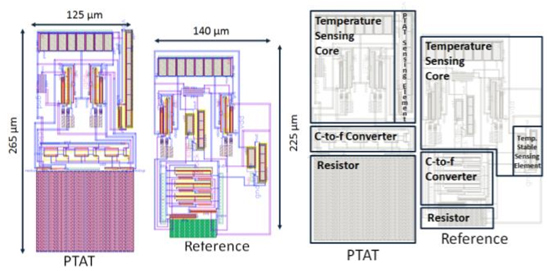Students win prizes for circuit designs in EECS 413
EECS 413 is an introduction to CMOS analog and mixed signal design, and also introduces advanced topics.
Two teams of students in Monolithic Amplifier Circuits (EECS 413) earned prizes for their final circuit design projects. The course, taught by Prof. Michael Flynn, has a tradition of offering industry sponsored prizes to the best final projects in the course, and this Fall’s top groups went home with some new iPads courtesy of Apple.
EECS 413 is an introduction to CMOS analog and mixed signal design, and also introduces advanced topics. A full suite of commercial design tools from Cadence is used for schematic entry, simulation, and layout. Designs are implemented in a commercial 0.13μm CMOS process.
First place went to Paul Myers, Tianyu Huang, Di Hu, and Rifat Sheikh for their project An Ultra-Low Power Energy Harvester with Integrated MPPT Circuit. Each team member won an iPad Air. Second place went to Seyed Amin Sandoughsaz Zardini, Chester Liu, Kanghwan Kim, and Shengshuo Lu for An Integrated Ultra-Low Power CMOS On-Chip Thermal Sensor; each team member took home an iPad Mini.
An Ultra-Low Power Energy Harvester with Integrated MPPT Circuit

 Enlarge
Enlarge
The winning team designed an ultra-low power integrated energy harvesting system paired with a maximum power point tracking (MPPT) circuit. Energy harvester circuits have been drawing a great deal of attention recently due to the necessity for recharging battery-powered applications, such as wireless sensor networks, wearables, and implantable devices. For their project, the team integrated an MPPT circuit into an existing ultra-low power energy harvester; the MMPT circuit is able to track the maximum power point and automatically adjust the harvester conversion ratio.
The team’s design was found to be competitive with state-of-the-art energy harvesters, offering an efficiency on the order of 56%, a compact size of 1.21mm2, and low self-startup voltage of 140mV.

 Enlarge
Enlarge
An Integrated Ultra-Low Power CMOS On-Chip Thermal Sensor

 Enlarge
Enlarge
This team designed and implemented an ultra-low power, fully-integrated on-chip temperature sensor, designed for use in battery-operated wireless sensor-nodes. Thermal issues are a major problem in very large scale integrated circuits. Excessive heat generated by a large number of transistors switching at high frequencies can cause increased leakage current, reliability degradation, and even physical damage to devices. Thermal sensors are integrated into modern chips to detect the temperature, but they can be difficult to fully integrate and they need to operate at extremely low power levels to prevent increasing the overall temperature.
The team created a sensor that consumes only 57nW in TT corner, yields 1.4nJ of energy consumption per conversion, a resolution of 0.37oC, and conversion time of 25.45ms. In terms of power consumption, Energy/Conversion and conversion time, their design shows an improvement over a recently reported design.

 Enlarge
Enlarge
 MENU
MENU 
